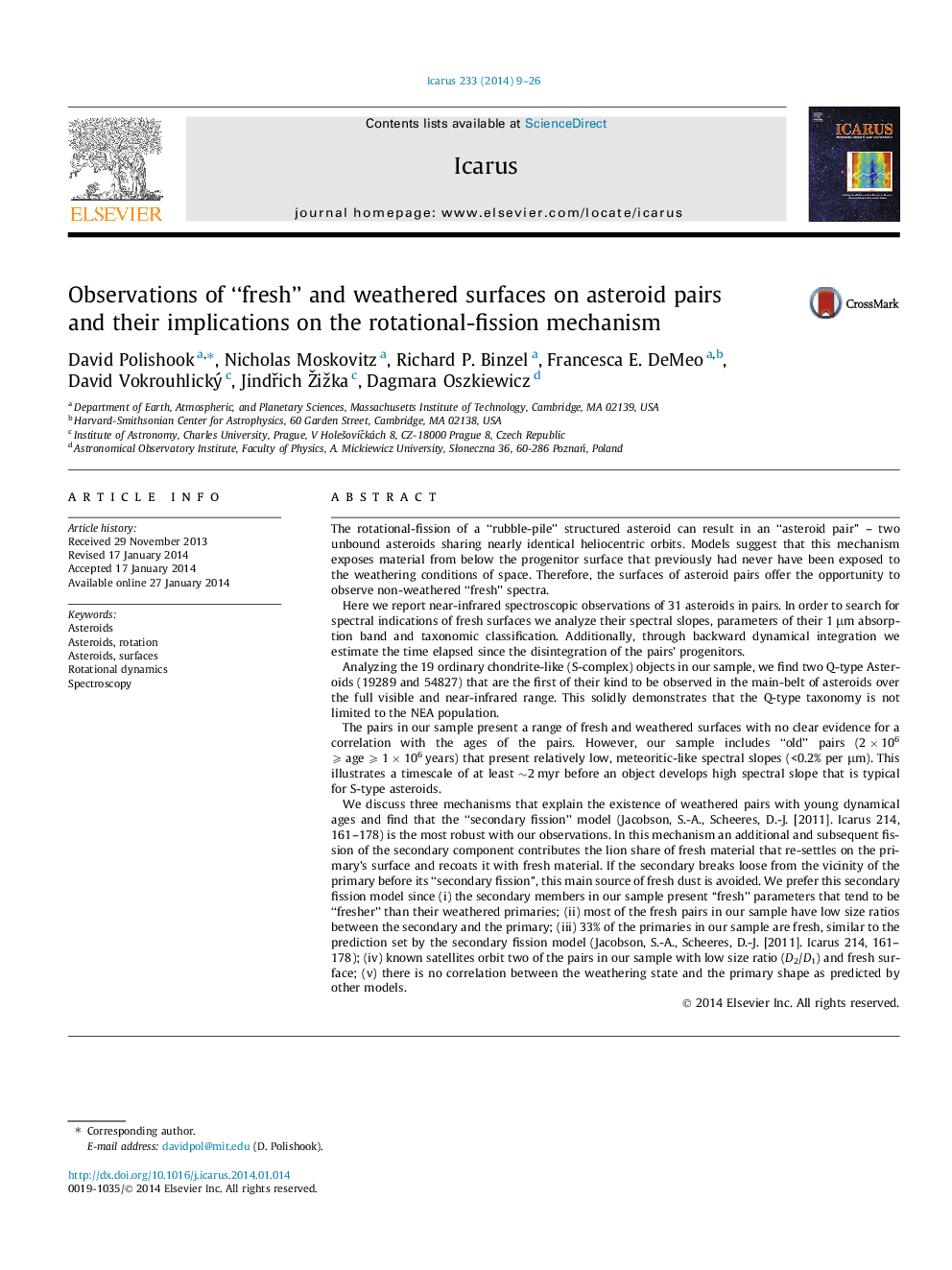| Article ID | Journal | Published Year | Pages | File Type |
|---|---|---|---|---|
| 8138237 | Icarus | 2014 | 18 Pages |
Abstract
We discuss three mechanisms that explain the existence of weathered pairs with young dynamical ages and find that the “secondary fission” model (Jacobson, S.-A., Scheeres, D.-J. [2011]. Icarus 214, 161-178) is the most robust with our observations. In this mechanism an additional and subsequent fission of the secondary component contributes the lion share of fresh material that re-settles on the primary's surface and recoats it with fresh material. If the secondary breaks loose from the vicinity of the primary before its “secondary fission”, this main source of fresh dust is avoided. We prefer this secondary fission model since (i) the secondary members in our sample present “fresh” parameters that tend to be “fresher” than their weathered primaries; (ii) most of the fresh pairs in our sample have low size ratios between the secondary and the primary; (iii) 33% of the primaries in our sample are fresh, similar to the prediction set by the secondary fission model (Jacobson, S.-A., Scheeres, D.-J. [2011]. Icarus 214, 161-178); (iv) known satellites orbit two of the pairs in our sample with low size ratio (D2/D1) and fresh surface; (v) there is no correlation between the weathering state and the primary shape as predicted by other models.
Related Topics
Physical Sciences and Engineering
Earth and Planetary Sciences
Space and Planetary Science
Authors
David Polishook, Nicholas Moskovitz, Richard P. Binzel, Francesca E. DeMeo, David Vokrouhlický, JindÅich Žižka, Dagmara Oszkiewicz,
